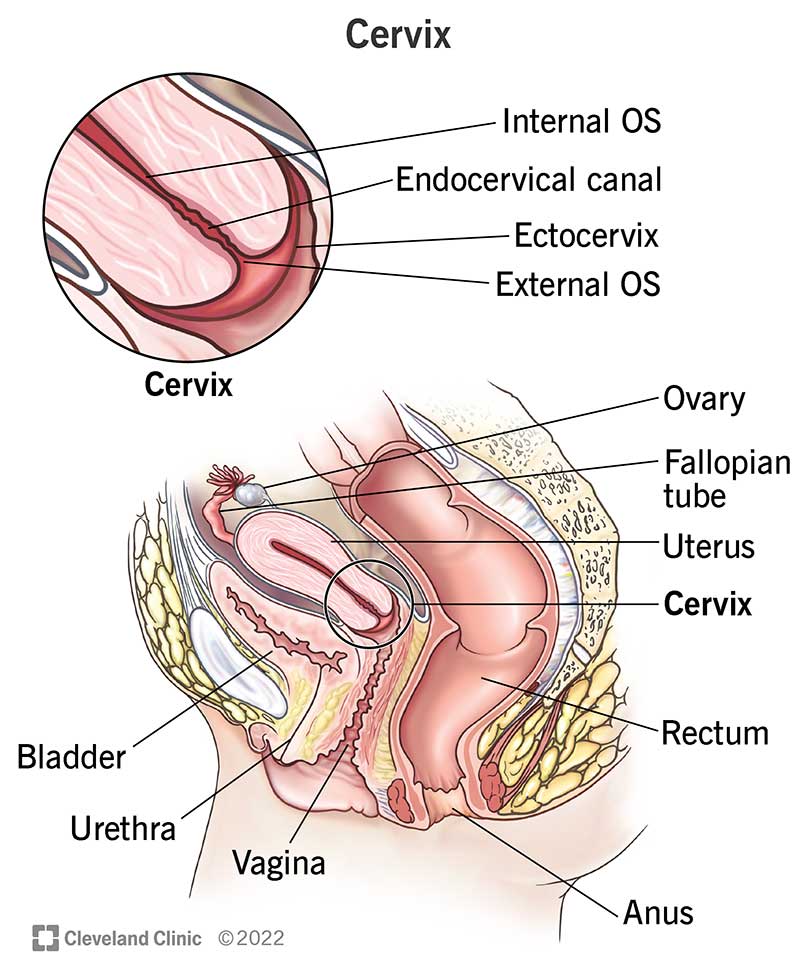
Honestly, it wasn’t until a few years ago that I really had a good understanding of what the cervix is. I’d heard the word in the context of it being dilated in childbirth and from cervical cancer prevention campaigns back when I worked on public health programming, but I wouldn’t have been able to tell you exactly what purpose it served. So in recognition of January being cervical cancer awareness month, let’s get cervical!

In short, the cervix is the bottom part, or neck of the uterus (cervix actually means neck in Latin), separating it from the vaginal canal. Usually about an inch long, it acts as a barrier between the womb and the outside world as it were, opening only on three distinct occasions: at ovulation to allow semen through, during menstruation to let menstrual fluid out, and during childbirth. The cervix produces different kinds of mucus to serve specific functions, including providing sperm with a nutrient dense snack or fast-tracking them up towards an egg waiting to be fertilized, or sealing the uterus off from external intruders like germs or sperm at the wrong time of the cycle.
For more in-depth information and diagrams about the cervix itself, the Cleveland Clinic has a great, easy-to-read overview.
The tissue that makes up the cervix is dynamic, and is readily influenced by hormones, but also by stress or external pathogens, like the Human Papilloma Virus (HPV).
Because the tissue that makes up the cervix is so responsive to outside factors, the cells are naturally prone to frequent changes. The Pap test (also known as a Pap smear) is a routine examination of cervical cells to see if any of those changes are abnormal. It involves a practitioner gently retrieving cells from the surface of the cervix to review under a microscope to see if those changes have the potential to lead to cancer cell replication.
Cervical cancer is a very slow moving cancer and is relatively straightforward to treat if caught early on. It is therefore recommended that people with cervixes undergo a Pap test every 3-5 years, depending on risk factors. For in-depth information about Pap tests and HPV, I recommend checking out Dr. Aviva Romm’s excellent article and podcast.
Herbal Approaches to Support Cervical Health
The natural world is full of allies that can help promote cervical health, and herbal medicine can be an effective way to support the body’s inherent ability to protect and heal itself. Here are some of the ways I think about incorporating herbs in cervical care:
- Many plants, especially those with lots of purple, red or blue pigments, are full of antioxidants that help protect against cancerous changes. Ingesting berries as food or in teas, tinctures or vinegars are tasty ways it to increase antioxidant intake.
- Herbs with anti-viral properties, like cedar or pau d’arco, can be used to help the body fight infections that can impact cervical health, such as HPV.
- Herbs that contain phytochemicals that target cancer cells can be taken internally or applied topically, like chaga mushroom.
- Herbs like calendula or goto kola that promote tissue healing can be taken internally or applied topically
- Herbal tonics that can help mitigate the impact of stress, such as adaptogens and nerviness like holy basil or ashwagandha, can help create an internal environment primed for healing
- Herbs that support a strong immune response, like reishi mushroom or echinacea, can be wonderful for preventing infections from taking hold.
If you want more individualized guidance on how to safely use herbs to support your cervical health, book an appointment to work 1:1 with Kate.

Medical Disclaimer: The information on this site is provided as an information resource only, and is not to be used or relied on for any diagnostic or treatment. This information does not create any patient-practitioner relationship, and should not be used as a substitute for professional diagnosis and treatment. Please consult your health care provider before making any health care decisions or for guidance about a specific medical condition.




